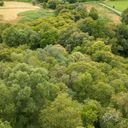
Reforestation in Europe as a corporate contribution to the environment
81% of Europe’s forests are sick. Meet your ESG goals, by investing in European reforestation projects.

Support local reforestation and afforestation projects
Through reforestation and afforestation projects, your company can contribute to restoring ecosystems, reducing carbon emissions, and preserving biodiversity for future generations with tangible impact you can measure and report on.
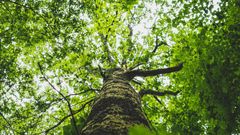
Tree ownership
Purchase an asset for your business.
Invest in a natural product with long-term returns.
Offer trees to your partners or employees
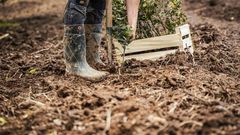
Tree sponsorship
Take advantage of attractive rates.
Support local reforestation.
Support local jobs in the forestry sector.
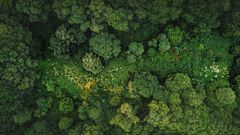
Direct Forest Investment
Become the owner of an entire forest
Get certified carbon credits and biodiversity KPIs
Benefit from the yield of sustainable timber
The co-benefits of reforestation and afforestation projects
With each project invested in, you are doing much more than planting trees.
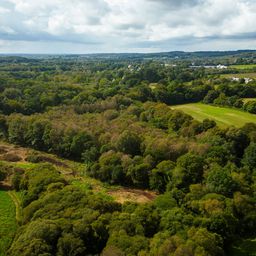
Climate resilience
Mixed-species forests with continuous cover are more resistant to climatic hazards and natural disasters.

Biodiversity
Supporting biodiversity results in more resilient forests.
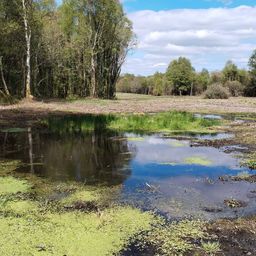
Soil and water
Our approach considers the water cycle and helps preserve soil structures.
How we work together
How we work together
Help you achieve your ESG objectives
We start by learning where you are on your sustainability journey and what kind of impact you are looking to have - whether it is contributing to carbon capture, water preservation, or local ecosystem restoration.
Develop a tailor-made project or investment
Based on your objectives, we will work with you to find a project that you could support in the region that matters to you: afforestation, reforestation, sponsorship or support for sustainable forest management. You recieve a detailed offer tailored to your budget and priorities.
Provide data and certifications for reporting
Once you have approved the project, we will provide you with proof of contribution (certificates, etc.), photos and communication materials, so that you can share your contribution to the forests with your employees, customers and stakeholders.

The advantages of your reforestation investment
Forest certificates
You will receive an ownership certificate with the location of your trees.
Track your projects
From your online account you can track and see the projects you have invested in.
Measurable data
You receive verified data and KPIs that can be used in extra-financial reporting.
Communication & events
You get access to communication materials and invitations to planned project visits.
Client success stories with forestry projects
Siemens Gamesa: Local commitment
In line with their commitments, Siemens Gamesa planted 1,134 trees in Thisted, Denmark, near their Danish headquarters to reflect their local commitment. In 2022, Siemens and EcoTree held a forest excursion with employees and their families who wanted to get involved. Together, we carried out weeding, cleaning and supplementary planting as needed.
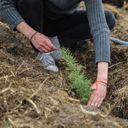
La Vosgienne: Engage your customers
La Vosgienne has chosen to engage with EcoTree for a project in line with the DNA of its brand. Consumers of the confectionery are invited to sponsor a tree in a forest in the Vosges in France. The project is communicated via a game written directly on the packaging. The customer can choose the tree species they want to plant and is automatically entered in a draw to win an ownership tree. This is a project that has enabled planting and sustainable management of 5,000 trees.

OVO Energy: Companies that are committed to our ecosystems
OVO Energy aims to grow in a sustainable manner by combining its growth with a tangible commitment to French forests. By partnering with Ecotree, OVO Energy has funded planting 60,000 trees on former agricultural land to promote mixed forestry. The trees were planted during an employee visit to the forest in Brittany. The planting took place in the heart of Morbihan, in the Ploërdut forest, which covers 11.6 hectares.
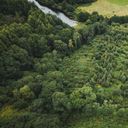
Origins: Building customer loyalty and awareness
For over a decade, Origins has partnered with various organisations to support tree planting efforts around the world. Since 2009, their tree planting initiative has pledged, planted and cared for over 2.3 million trees. In line with this global vision, Origins Nordic teamed up with EcoTree to give back to nature more locally. Since 2021 Origins Nordic has supported the planting and caring of over 11,000 trees across France and Denmark through various consumer facing activities instore and online.

A sustainable forestry approach
We practice 'close-to-nature' forestry, which is also known as continuous cover forestry.
We are foresters
Mixed-species
Continuous cover
Hyper local plan
Frequently asked questions about our forestry projects
What is the difference between reforestation and afforestation?
Reforestation and afforestation are both essential practices in forest management, but they differ in their objectives and contexts:
Reforestation refers to the process of replanting trees in areas that were previously forested but have suffered degradation, whether through natural events such as fires and storms or human impact. The goal is to restore the forest ecosystem, enhance biodiversity, and contribute to carbon sequestration. Reforestation is particularly important in regions where forests have been damaged or poorly managed. In Germany and France, where a significant portion of forests are either diseased, infested with pests (such as bark beetles), or poorly managed, our primary focus is on reforestation. Here, we aim to restore forests and increase resilience to future climate impacts by using native or adaptive tree species.
Afforestation, on the other hand, is the process of establishing new forests on land that was previously not forested, such as grasslands, agricultural fields, or degraded areas. This helps increase overall forest cover and can support biodiversity, carbon capture, and local climate regulation. In Denmark, where the forest cover is below 15%, afforestation is a key strategy for expanding forested areas and improving the country’s environmental resilience.
Why reforest a forested area?
Reforesting a plot or an entire forest offers several key benefits:
• Restoring forests damaged by fires, storms, diseases, or pests.
• Increasing species diversity to improve resilience against climate-related events.
• Enhancing biodiversity by creating new habitats.
• Improving soil and water quality.
• Contributing to CO₂ sequestration, thus mitigating climate change.
Reforestation breathes new life into a fragile ecosystem, preparing forests for the climate conditions of tomorrow. For example, following bark beetle damage in the Syndicat forest in France, a post-sanitation reforestation plan introduced three different species: Sessile Oak, Laricio pine, and Byzantine hazel, combined with natural regeneration of spruce and fir. This has created a more biodiversity-rich forest, better adapted to future climate conditions and more resilient to natural or climate-related disasters.
What are the stages of reforestation?
Reforestation of a degraded forest follows a systematic process of the following five steps:
• 1. Site assessment: Evaluating soil conditions, climate, and regeneration potential.
• 2. Species selection: Choosing species suited to the local pedoclimatic conditions and biodiversity goals.
• 3. Ground preparation: Clearing vegetation and soil tilling, if necessary.
• 4. Planting: Tree saplings are planted at appropriate densities.
• 5. Maintenance: Including clearing, protecting saplings from wildlife and invasive plants, and replanting any saplings that don’t survive during the first three years.
• 6. Long-term monitoring: Ensuring the growth and resilience of the forest through long-term management.
This long-term management is vital, as a forest takes decades to establish and requires ongoing care.
What types of reforestation are there?
There are different types of reforestation, two of which we practice: Active planting and assisted natural regeneration (ANR):
Active planting involves manually planting saplings selected for their local adaptability and growth potential. These saplings are often planted in worked pots after soil preparation, ensuring better growth by preventing competition from other vegetation.
Assisted natural regeneration (ANR), which relies on existing seeds or natural regrowth on the site. Human intervention focuses on protecting and enhancing these young sprouts by removing threats such as competition from other plants or grazing by animals.
In some cases, a combined approach may be employed, leveraging the natural resilience of forests while enhancing genetic diversity through plantations. Trees grown through natural regeneration are often more resilient, but a mixture of species is necessary to adapt to climate change.
What is Assisted Natural Regeneration (ANR)?
Assisted natural regeneration (ANR) is a reforestation method that harnesses the natural regenerative capacity of a forest. Instead of mass planting, we identify and protect the young seedlings from fallen seeds, sprouts, or shoots. Human action involves:
• Protecting seedlings from competition and grazing.
• Selecting the best and most promising plants.
• Potentially enriching with complementary species to increase diversity within the forest.
This approach is cost-effective, preserves local genetic diversity, and respects natural ecological dynamics. It’s especially relevant after disturbances like fires or storms, and can be combined with plantations where natural regeneration is insufficient.
What are the challenges of reforestation?
Reforesting a forest is a long-term project that faces several challenges:
• Initial costs: Costs can be high, including the cost of saplings, soil preparation, planting, and follow-up care, such as replanting, clearing, and protecting young plants.
• Climate dependency: Droughts, heatwaves, and storms pose risks. While we cannot predict the future climate, we can take preventive measures, such as choosing resilient species and mixing tree ages to withstand storms.
• Pest and disease outbreaks: These are difficult to predict, but many regions release annual forest health reports to monitor these threats.
• Slow returns: Wood takes decades to mature, though timber revenue grows steadily by an average of 2% per year in Europe.
• Long-term commitment: Reforestation requires sustained care in the early years.
These challenges require careful planning and long-term commitment to ensure sustainable forest management.
Why is it important to reforest Europe?
Reforestation is essential for restoring ecosystems that are increasingly threatened by climate change, pests, and wildfires. Europe’s forests, covering about 32% of the land area, face mounting pressure, with many experiencing significant damage from events like droughts and insect infestations. Reforestation helps enhance biodiversity by supporting both native species and improving forest health, which is crucial for climate resilience.
For instance, forests in countries such as France and Germany have been significantly impacted by pests like the bark beetle, resulting in widespread damage. Reforestation is key to mitigating these impacts. It also contributes to carbon sequestration, with European forests absorbing approximately 7.5% of the EU's total annual carbon emissions. By restoring degraded landscapes, reforestation not only strengthens forest resilience but also boosts local economies, creates jobs in forest management, and helps achieve Europe’s ambitious climate goals. This makes reforestation vital to securing a sustainable future for both nature and communities.
How to choose between planting and Assisted Natural Regeneration (ANR)?
The choice between planting and ANR depends on the site's natural regeneration potential:
• If the site already contains viable natural seedlings, Assisted Natural Regeneration (ANR) is preferable as it is more economical and maintains local diversity.
• If the site is completely degraded or lacks regeneration, active planting is necessary to restore the forest.
In some cases, a mixed approach is ideal: letting nature take its course where possible and complementing it with targeted plantations to enrich the forest.
What are the costs of afforestation or reforestation?
The cost of a reforestation or afforestation project varies significantly based on:
• The area to be reforested or afforested.
• The tree species selected (some species are more expensive than others).
• Soil preparation (some areas require machinery that may struggle with rough terrain).
• Necessary protections (e.g., fences for wildlife, shelters, etc.).
• Monitoring and early-stage maintenance.
On average, reforestation in France, for example, costs between €2,000 and €6,000 per hectare, depending on the project's complexity. Assisted Natural Regeneration (ANR) can substantially reduce costs by requiring fewer saplings and less labour.
What does the legislation say about reforestation in Europe?
European legislation tightly regulates reforestation, with the aim of:
• Ensuring reforestation follows large-scale clear-cuts above certain thresholds.
• Requiring landowners to maintain forested land.
• Providing public subsidies and financial support for reforestation initiatives (e.g., EU Forest Strategy, EU Carbon Market).
• Encouraging the use of sustainable forest management and best practices.
This legal framework ensures the restoration of forest cover and promotes climate adaptation, supporting both ecological sustainability and climate resilience.
Ready to take action?
Get in touch with our team to learn how we can help support your sustainability goals (i.e. SBTi, Net Zero or CSRD) and create long lasting environmental impact.